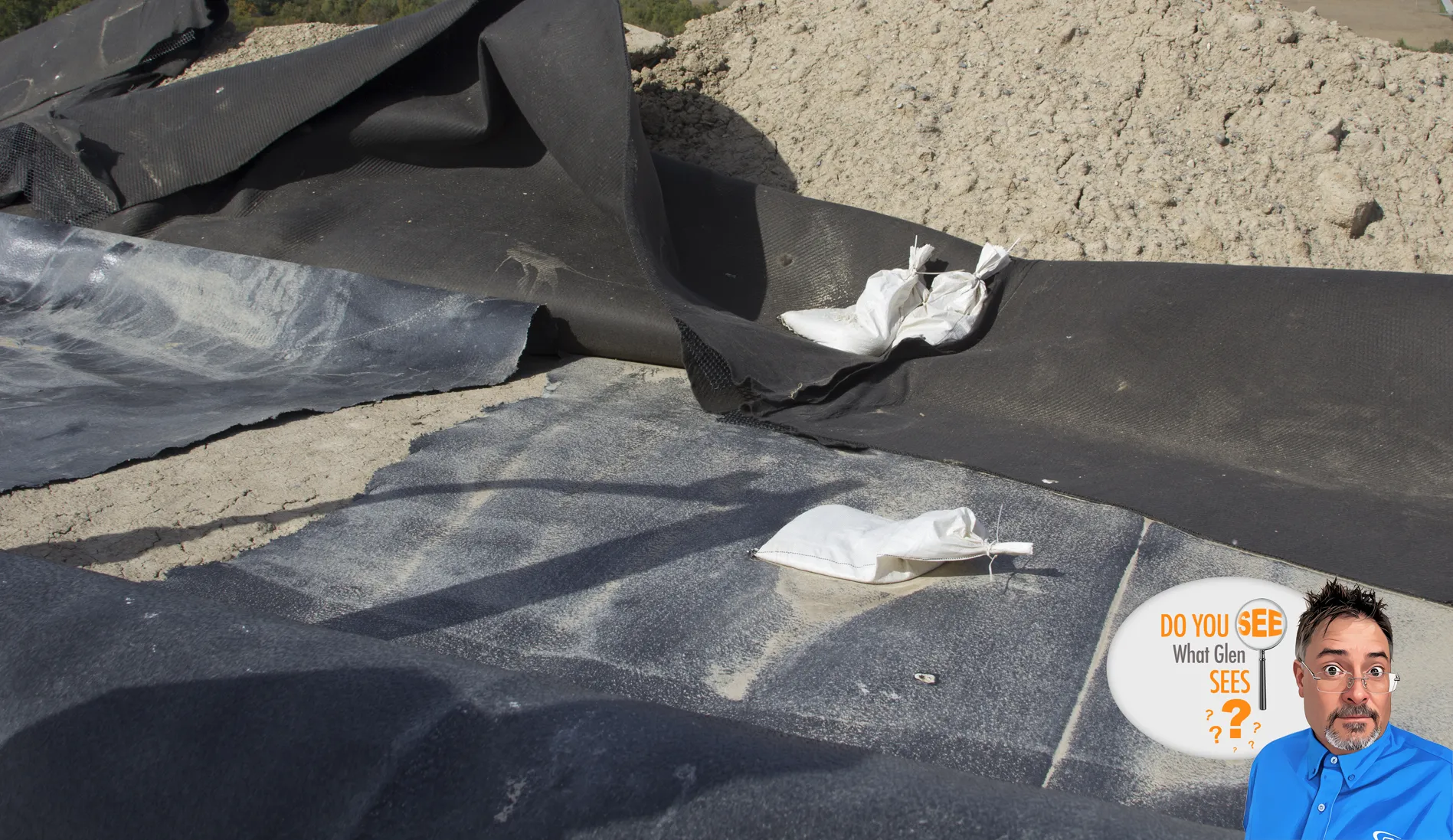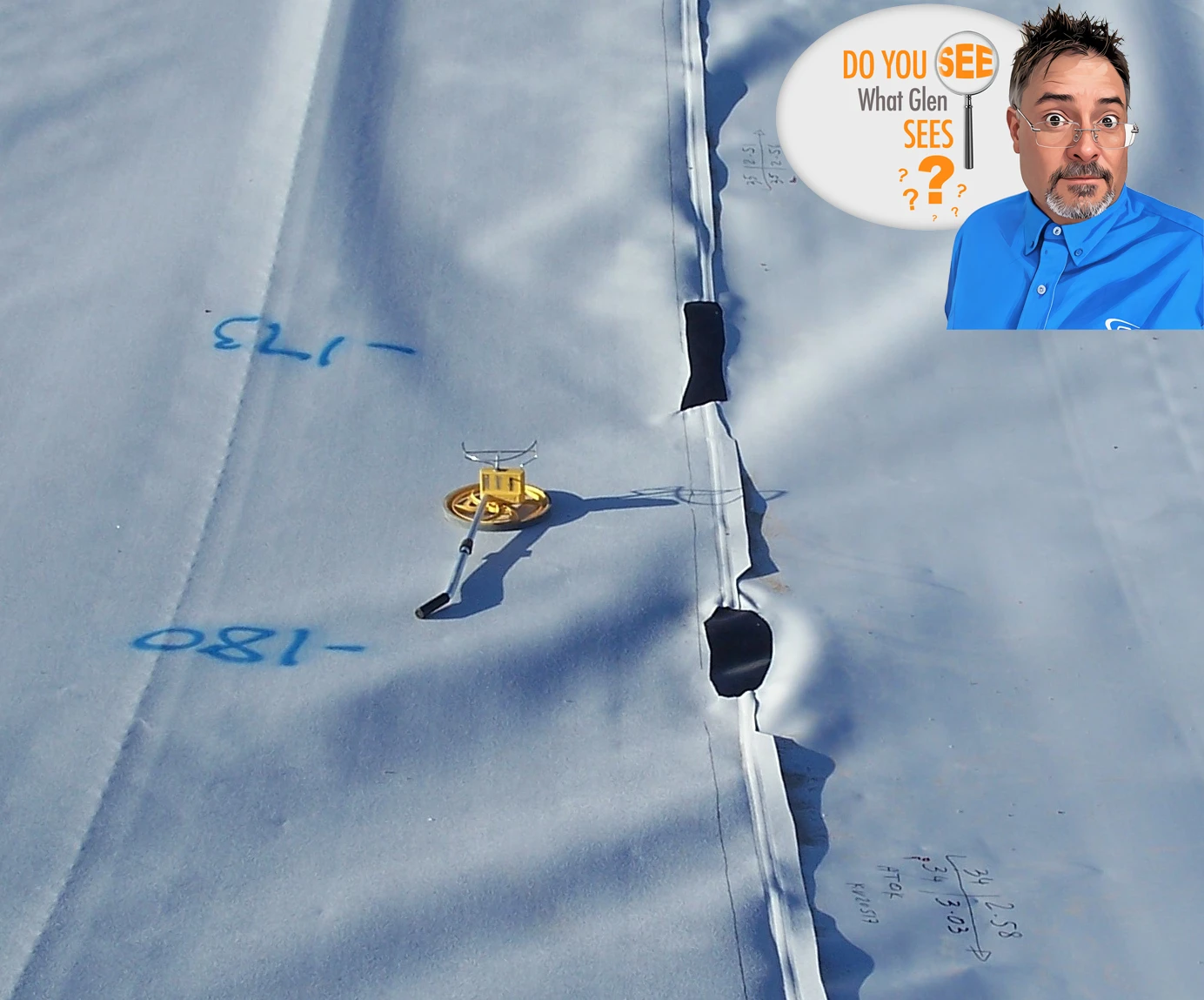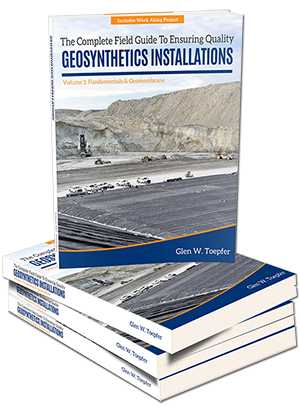First, the answer to Vol. 17 (last week).
This one is a tear that happened in the existing geomembrane during the exposing of the existing geomembrane at the tie-in. The tear extends below the existing cover soil, so further careful excavation will be required. The condition of the existing compacted clay liner subgrade also needs to be monitored – it appears in the photo that the surface is drying out, so precautions need to be taken in such instances to prevent further desiccation. Additionally, there is a shiny spot on the wrinkle, near the left side of the photo – this should be examined to determine if any damage occurred – it is suspect because the surrounding geomembrane is duller and dirtier, indicating something may have happened during the exposing process. All the existing geocomposite needs to be examined as well – both sides! When material is flipped back with the bottom side exposed, it often gets silted and flipped back with no regard for the siltation. If different geotextile thicknesses are used on top and bottom, the correct orientation of materials must be confirmed, especially if pieces are trimmed and reused.
In these blog posts, Do You See What Glen Sees, I will present a photograph or short video related to earthwork or geosynthetics construction and have you identify the significance of what you’re seeing.
It could be things being done correctly or incorrectly. Primarily, these will be things that impact quality.
In addition to my blog, I’ll post this content on X and LinkedIn. You can post your response on one of those two.
I’ll give you my thoughts on each photo or video when I post the next installment.
Do you see what I see? Or did you find something I missed? I’m excited to find out!

Here is the next installment. Take a good look. Do You See What Glen Sees?
Welcome to volume 18 of Do You See What Glen Sees! I hope you’re enjoying these as much as I am!!
Did anyone else realize we are in the midst of a 10-day date Palindrome? If you write dates in the format of Month (single digit)/day/year (last two-digits) (e.g. 5/22/25), each date reads the same forwards and backwards from May 20, 2025 (5/20/25) through May 29, 2025 (5/29/25). I didn’t realize it either – if I was writing the date in the field, I likely would have caught it. A shout out to a local Toledo Meteorologist Ross Ellet w/13abc for sharing this!
Regarding the photo, I see at least three things worth mentioning. Let’s see if we can find any more before next week’s answer! For those of you in the United States, I hope you don’t spend too much time thinking about this over the Memorial Day weekend! 🙂
Let me know what you see!





